本文使用的libgdx是0.92版本,和现在的最新版可能有一些不一样的地方。全文内容仅供参考。
我们先看几个游戏截图再来理解何为舞台。
请仔细观察图片中的元素,有些东西是不能动,有些可以动,有些有特效,有些没有。有些是按钮,有些是图片,但是其实它们都可以统一称为演员(Actor)。
而整个游戏界面就是我们的舞台。
再看一个射击类游戏
而其中的演员是
演员是游戏设计中常用的一个对象,它接受舞台的统一管理,拥有一些公共的事件,比如触摸,点击,但是同时还有自身的响应和属性。
而舞台就是容纳演员的场所。它统一管理所有演员,接受输入,同时提供一个方便的框架操作演员的时间变化。
我们来看一下Stage类:
protected final Group root;
protected final SpriteBatch batch;
protected Camera camera;
|
它拥有一个Group,一个SpriteBatch,还有一个相机。
SpriteBatch我们在前几篇说过,这里就不再重复了。
Group是一个类,用于容纳和控制演员。但是这里要注意Group本身其实也是继承自Actor。
相机我们这里跳过,以后再说,可以暂时理解成一个控制观察视角和指标转化的工具。
当我们拥有一个演员后就可以调用addActor方法加入舞台。
舞台可以获取输入,但是需要设置。
Gdx.input.setInputProcessor(stage); |
下面来个列子,控制一个人物前进。
控制人物的按钮:
将所需的图片放到assert中
新建三个类:
FirstGame,实现接口ApplicationListener
FirstActor,继承Actor
NarrowButton,继承Actor
先看一下FirstGame
声明一个Stage,然后实例化FirstActor和NarrowButton,将二者加入舞台中,最后设置输入响应为Stage。
package com.cnblogs.htynkn.listener;
import java.util.Date;
import java.util.Random;
import javax.microedition.khronos.opengles.GL;
import android.util.Log;
import com.badlogic.gdx.ApplicationListener;
import com.badlogic.gdx.Gdx;
import com.badlogic.gdx.graphics.GL10;
import com.badlogic.gdx.graphics.g2d.BitmapFont;
import com.badlogic.gdx.scenes.scene2d.Stage;
import com.cnblogs.htynkn.domain.FirstActor;
import com.cnblogs.htynkn.domain.NarrowButton;
public class FirstGame implements ApplicationListener {
private Stage stage;
private FirstActor firstActor;
private NarrowButton button;
@Override
public void create() {
stage = new Stage(Gdx.graphics.getWidth(), Gdx.graphics.getHeight(),
true);
firstActor = new FirstActor("renwu");
button = new NarrowButton("narrow");
stage.addActor(firstActor);
stage.addActor(button);
Gdx.input.setInputProcessor(stage);
}
@Override
public void dispose() {
stage.dispose();
}
@Override
public void pause() {
// TODO Auto-generated method stub
}
@Override
public void render() {
Gdx.gl.glClear(GL10.GL_COLOR_BUFFER_BIT);
stage.act(Gdx.graphics.getDeltaTime());
stage.draw();
}
@Override
public void resize(int width, int height) {
// TODO Auto-generated method stub
}
@Override
public void resume() {
// TODO Auto-generated method stub
}
} |
再看一下FirstActor。
声明一个Texture用于绘制。在构造方法中获取到高度和宽度,以便于后期的hit时间判断。
package com.cnblogs.htynkn.domain;
import com.badlogic.gdx.Gdx;
import com.badlogic.gdx.graphics.Texture;
import com.badlogic.gdx.graphics.g2d.SpriteBatch;
import com.badlogic.gdx.scenes.scene2d.Actor;
public class FirstActor extends Actor {
Texture texture;
@Override
public void draw(SpriteBatch batch, float parentAlpha) {
batch.draw(texture, this.x, this.y);
}
@Override
public Actor hit(float x, float y) {
if (x > 0 && y > 0 && this.height > y && this.width > x) {
return this;
} else {
return null;
}
}
@Override
public boolean touchDown(float x, float y, int pointer) {
// TODO Auto-generated method stub
return false;
}
@Override
public void touchDragged(float x, float y, int pointer) {
// TODO Auto-generated method stub
}
@Override
public void touchUp(float x, float y, int pointer) {
// TODO Auto-generated method stub
}
public FirstActor(String name) {
super(name);
texture = new Texture(Gdx.files.internal("actor1.gif"));
this.height = texture.getHeight();
this.width = texture.getWidth();
}
} |
NarrowButton中代码绘制部分和上面的以下,主要是有个点击后控制人物行动的问题。
修改touchDown事件:
通过Group获取到FirstActor,控制x值。
public boolean touchDown(float x, float y, int pointer) {
Actor actor = this.parent.findActor("renwu");
actor.x += 10;
return false;
}
|
效果:
到此为止一个最简单的人物控制我们已经实现了。但是这个有实例还有很多可以改进的地方,比如方向按钮没有点击效果,人物没有移动效果。
我们可以使用Animation来实现。添加一张图片
具体的原理我们看一下Animation类:
public class Animation {
final TextureRegion[] keyFrames;
public float frameDuration;
/** Constructor, storing the frame duration and key frames.
*
* @param frameDuration the time between frames in seconds.
* @param keyFrames the {@link TextureRegion}s representing the frames. */
public Animation (float frameDuration, List keyFrames) {
this.frameDuration = frameDuration;
this.keyFrames = new TextureRegion[keyFrames.size()];
for(int i = 0, n = keyFrames.size(); i < n; i++) {
this.keyFrames[i] = (TextureRegion)keyFrames.get(i);
}
}
/** Constructor, storing the frame duration and key frames.
*
* @param frameDuration the time between frames in seconds.
* @param keyFrames the {@link TextureRegion}s representing the frames. */
public Animation (float frameDuration, TextureRegion... keyFrames) {
this.frameDuration = frameDuration;
this.keyFrames = keyFrames;
}
/** Returns a {@link TextureRegion} based on the so called state time. This is the amount of seconds an object has spent in the
* state this Animation instance represents, e.g. running, jumping and so on. The mode specifies whether the animation is
* looping or not.
* @param stateTime the time spent in the state represented by this animation.
* @param looping whether the animation is looping or not.
* @return the TextureRegion representing the frame of animation for the given state time. */
public TextureRegion getKeyFrame (float stateTime, boolean looping) {
int frameNumber = (int)(stateTime / frameDuration);
if (!looping) {
frameNumber = Math.min(keyFrames.length - 1, frameNumber);
} else {
frameNumber = frameNumber % keyFrames.length;
}
return keyFrames[frameNumber];
}
} |
可以看出所谓的动画其实是一张一张的图片不断切换(其实所有的动画都是这个样子的)。
我们构造一个图片列表然后根据事件变动不停取出,重新绘制就形成动画了。
注意一下传入的时间和图片列表大小的问题,修改FirstActor代码如下:
package com.cnblogs.htynkn.domain;
import com.badlogic.gdx.Gdx;
import com.badlogic.gdx.graphics.Texture;
import com.badlogic.gdx.graphics.g2d.Animation;
import com.badlogic.gdx.graphics.g2d.SpriteBatch;
import com.badlogic.gdx.graphics.g2d.TextureRegion;
import com.badlogic.gdx.scenes.scene2d.Actor;
public class FirstActor extends Actor {
Texture texture1;
Texture texture2;
Animation animation;
TextureRegion[] walksFrame;
float stateTime;
@Override
public void draw(SpriteBatch batch, float parentAlpha) {
stateTime += Gdx.graphics.getDeltaTime();
TextureRegion currentFrame = animation.getKeyFrame(stateTime, true);
batch.draw(currentFrame, this.x, this.y);
}
@Override
public Actor hit(float x, float y) {
Gdx.app.log("INFO", x + " " + this.width);
if (x > 0 && y > 0 && this.height > y && this.width > x) {
return this;
} else {
return null;
}
}
@Override
public boolean touchDown(float x, float y, int pointer) {
// TODO Auto-generated method stub
return false;
}
@Override
public void touchDragged(float x, float y, int pointer) {
// TODO Auto-generated method stub
}
@Override
public void touchUp(float x, float y, int pointer) {
// TODO Auto-generated method stub
}
public FirstActor(String name) {
super(name);
texture1 = new Texture(Gdx.files.internal("actor1.gif"));
texture2 = new Texture(Gdx.files.internal("actor2.gif"));
this.height = texture1.getHeight();
this.width = texture1.getWidth();
TextureRegion region1;
TextureRegion region2;
region1 = new TextureRegion(texture1);
region2 = new TextureRegion(texture2);
walksFrame = new TextureRegion[30];
for (int i = 0; i < 30; i++) {
if (i % 2 == 0) {
walksFrame[i] = region1;
} else {
walksFrame[i] = region2;
}
}
animation = new Animation(0.25f, walksFrame);
}
} |
效果:
这里注意一下,为什么我们要Texture转为TextureRegion。这是因为在实际开发中的图片是集成在一起的,比如所有角色要用的图片都是放在一张图里,然后分割截取的,对应的辅助方法TextureRegion.split。
另外我们可以发现NarrowButton和FirstActor中有大量代码重复了,可能有朋友觉得应该提取一下,其实libgdx已经帮我们做了,可以参考
这里有一些常用的UI控件,估计下一篇可以讲到。
作者:黄云坤
出处:http://www.cnblogs.com/htynkn/
本文版权归作者和博客园共有,欢迎转载,但未经作者同意必须保留此段声明,且在文章页面明显位置给出原文连接,否则保留追究法律责任的权利。
支持: 新浪微博 腾讯微博




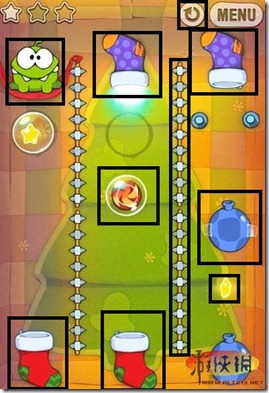




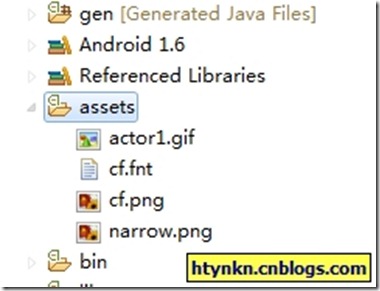
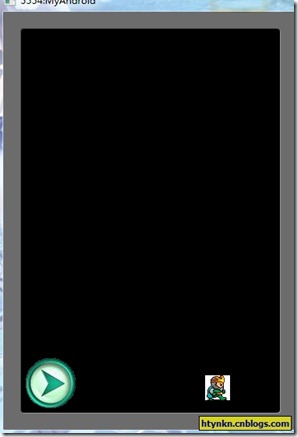
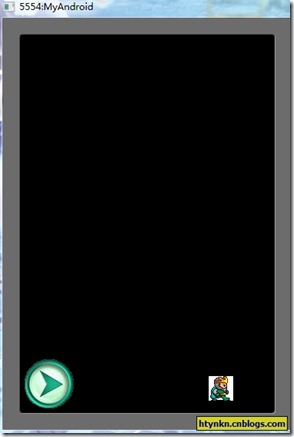
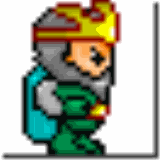
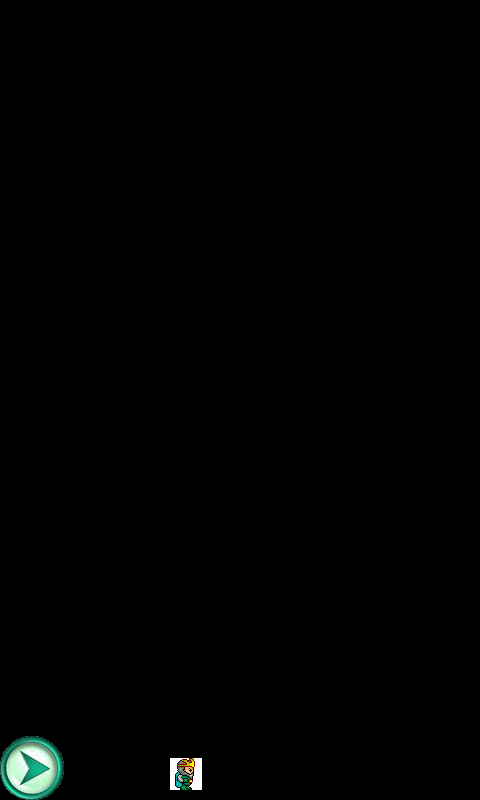




相关推荐
android游戏开发框架libgdx的使用(二)--图形绘制[汇编].pdf
android游戏开发框架libgdx的使用9.pdf
android游戏开发框架libgdx的使用教程,版权归黄云坤,本人只是引用,供大家是使用。http://www.cnblogs.com/htynkn/archive/2011/11/10/libgdx_1.html
android游戏开发框架libgdx的使用(一)--环境搭建.pdf
android游戏开发框架libgdx的使用3归纳.pdf
android游戏开发框架libgdx的使用(一)--环境搭建知识.pdf
android游戏开发框架libgdx的使用(二)--图形绘制借鉴.pdf
android游戏开发框架libgdx的使用3[归纳].pdf
android游戏开发框架libgdx的使用9定义.pdf
android游戏开发框架libgdx的使用9[参考].pdf
android游戏开发框架libgdx的使用(十二)—TiledMap地图的使用.pdf
android游戏开发框架libgdx的使用(十二)—TiledMap地图的使用借鉴.pdf
libgdx-nightly-20140711.zip libgdx 1.2.0
libGDX游戏引擎官网地址 What's libGDX?...我们关注如何结合Android原生APP开发,使用libGDX帮助我们实现高效的特效动画。 particle Demo video box2d Demo video libGDX几篇文章总结一下: 《libGDX系列
libgdx---MySuperJumper
libgdx-nightly-20110809.zip
下载后将libs中的gdx.jar,gdx-backend-android.jar,spine-libgdx.jar包放入androidstudio或elipse的libs下,将armeabi中的so放入jini目录下.支持使用libgdx使用spinne。
android游戏开发引擎 libgdx 游戏开发的利器